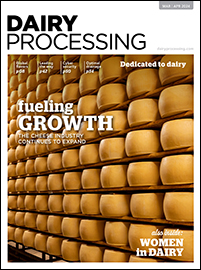CHICAGO – “Things can change at the millisecond — we have to pivot fast to meet the consumers’ changing needs,” said Natalie Shmulik, chief strategy and incubation officer at The Hatchery, during the startup incubator’s annual trend watch conference on Jan. 23.
Trends discussed at the event included premium, value and butter … yes, butter.
“Premium is doing well,” said Alastair Steel, executive-client engagement, Circana LLC, Chicago. “Consumers have also leaned into private label more than national brands. The brands that are really struggling are ‘value’ and ‘mainstream.’”
Premium foods are affordable luxuries for lower-income households. They provide elevated comfort. When these consumers feel the need to save, they turn to private label. This is why value and mainstream brands are hurting.
Steel said value will continue to be a key theme in 2025. But value means different things for different consumers. It’s not always about a lower price.
“Know your target consumer and your value proposition,” Steel said. “Even lower income households are willing to splurge and trade up. Make sure you understand where the pockets of growth are for your industry or segment.”
Shmulik emphasized the same sentiment. She explained that butter — real dairy butter — was one of the biggest things at the Winter Fancy Food Show, which was held Jan. 19-21 in Las Vegas.
“It’s part of the back-to-our-roots movement, just elevated,” she said. “There’s a lot of focus on the base product, the familiar product, but dressing it up, like dips with big flavor, lots of spice, lots of seasoning.”
New Buji Brown Butter is one example. Buji is short for the French word bourgeoisie, which is suggestive of something expensive used by the middle class to feel more upper class.
“When I mistakenly discovered the beauty, the smell and the flavor of this solid version of brown butter, I knew I had to spread ‘the butter,’” said Lisa Herlinger, founder of the Portland, Ore.-based company. “I am committed to using grass-fed butter, known for its higher levels of beta carotene, which is also responsible for the butter’s beautiful yellow appearance. Then I use traditional techniques to cook and brown it to perfection, creating a consistently delicious end product. I’m actually taking a beloved basic ingredient — butter — and making it kind of ‘fancy.’”
Other butter companies are following suit. M.A.D. Foods, New York, now offers Aux Délices des Bois flavored butters in bulk for meat and seafood counter service in supermarkets and foodservice. The 1 oz medallions of European-style cultured butter contain a minimum of 82% butterfat. Flavors include Parmesan herb, red wine shallot, roasted garlic and white truffle.
“There’s a lot of activity with tweaking what you already have in the market, renovations to existing products,” said Lynn Dornblaser, chief adviser, Mintel Solutions, Chicago. “These tend to be profitable quickly. There’s a noteworthy decrease of truly new products being rolled out into the market.”
While total innovation is down, unique offerings continue to appear. Even the largest brands are offering something new in terms of line extensions.
“We’re still cooking at home and we are still drinking at home, too,” Dornblaser said. “Despite consumers’ intentions to eat healthy, to cook meals from scratch and to stick to a set grocery budget, the reality is these do not always happen. Far from feeling concerned about these choices, consumers are embracing their imperfect and indulgent habits. In fact, half of US consumers ages 35 to 44 say they enjoy breaking the rules in what they eat and drink.
“Brands can target ‘perfectly imperfect’ consumers with innovation that breaks the invisible rules around food and drink by leaning into how consumers actually want to consume food and drink, versus how they feel they should. At the same time, the importance of getting the basic nutrition needed each day will be a widespread lesson that will exceed the reach and use of weight-loss drugs. Simplified claims that highlight protein, fiber, vitamin and mineral content appeal to weight-loss drug users and those seeking to eat just a bit better.”

